100 Stories
Museum of Science – It’s Not Just for Kids!
Ever since I was a kid, I hated being told that I was too old for something. At certain ages, we’re all supposed to stop believing in Santa, cease trick-or-treating, and outgrow Saturday morning cartoons. In spite of all that, I believe to some extent that age is just a number, and I for one have held onto my inner child ever since I stopped biologically being one. Having a minimum age requirement is understandable for a great number of things, but I find maximum age limits dubious for many fun things such as sweets, video games, and kid-friendly museums. For better or worse, the most famous museum of science in downtown Hiroshima is the “5-Days Children’s Cultural Science Museum,” whose name might inadvertently drive away an otherwise interested but mature crowd. Since the above name is quite a mouthful, I will henceforth refer to it as the “Children’s Museum,” but even that title doesn’t sit well with me knowing one is never too old for science.
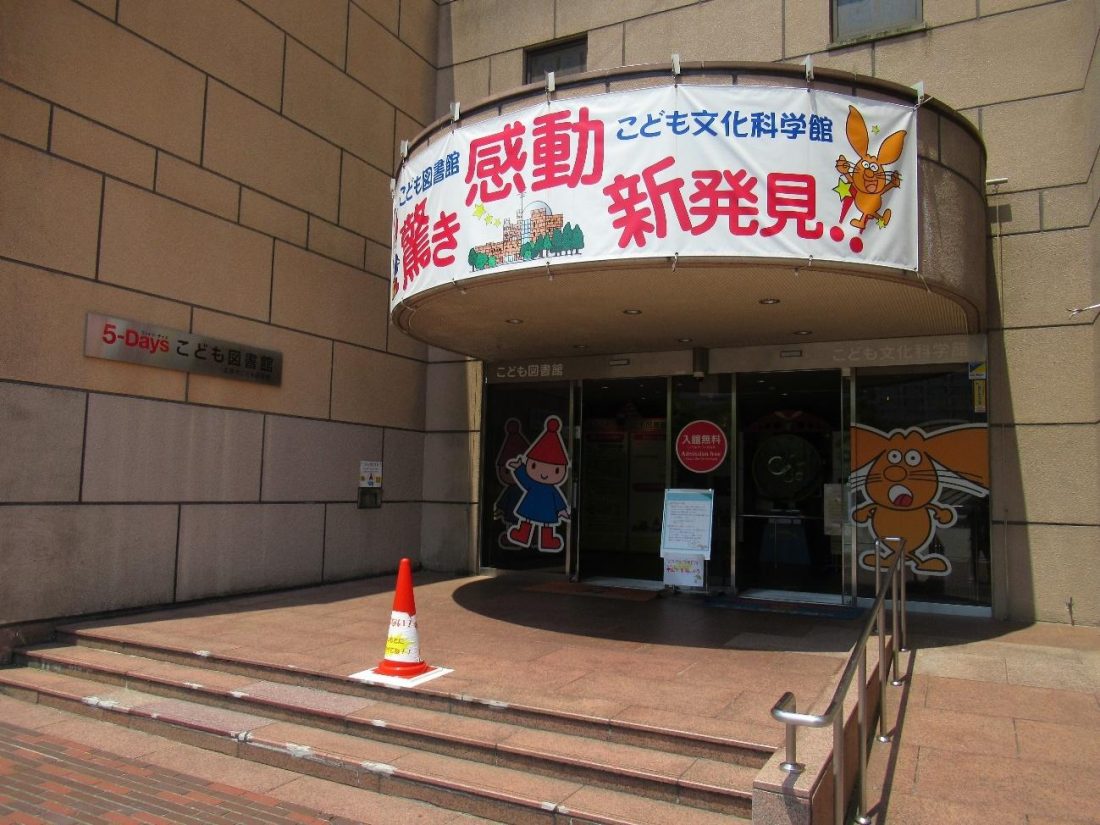
The Children’s Museum is a short walk north of the Atomic Bomb Dome and Orizuru Tower. Take the staircase pictured below that’s adjacent to Orizuru Tower, and you’ll end up in a parking garage. Walk past the automatic doors into the Shareo underground shopping mall, and then take a nearby staircase or escalator to resurface opposite of Orizuru Tower. From here, walk along the left side of the Former Hiroshima Municipal Baseball Stadium, which is now an empty, circular lot where seasonal events pop up a few times a year. Turn left onto a red path and follow it until you come across a black, titanic locomotive, signaling your arrival at the Children’s Museum.
First Floor
Upon entering the building, you’ll notice that the Hiroshima City Children’s Library is on the left and that the Children’s Museum is on the right. I turned right and entered the first floor of the museum, where they sell tickets to the planetarium on the fourth floor and science-y toys at the gift shop. As nothing was showing in the planetarium when I entered, I proceeded to see the regular exhibit, which is free of charge. The first thing that jumps out at viewers is the Hiroshima Meteorite. This celestial body once orbited the Sun in the asteroid belt, but fell to Earth on February 4th, 2003, smashing through the roof and ceiling of a distribution facility in Hiroshima City’s Asa-Minami Ward.
The first floor also hosts an Apollo Hall–where science shows are held–as well as a colossal indoor playground that’s connected to the second floor, but both were closed for the time being, which meant that the only thing left here was the Science Fantasy Land. Luckily, this is actually the most amusing part of the Children’s Museum and where I spent the bulk of my time. This museum is a popular field trip destination for kindergartens all over the city, and after seeing a show in the planetarium, the Science Fantasy Land is where they stop to play before they leave. In other words, as I participated in all these games and exhibits that makes fun out of physics, I had to watch out for wee tykes wherever I walked.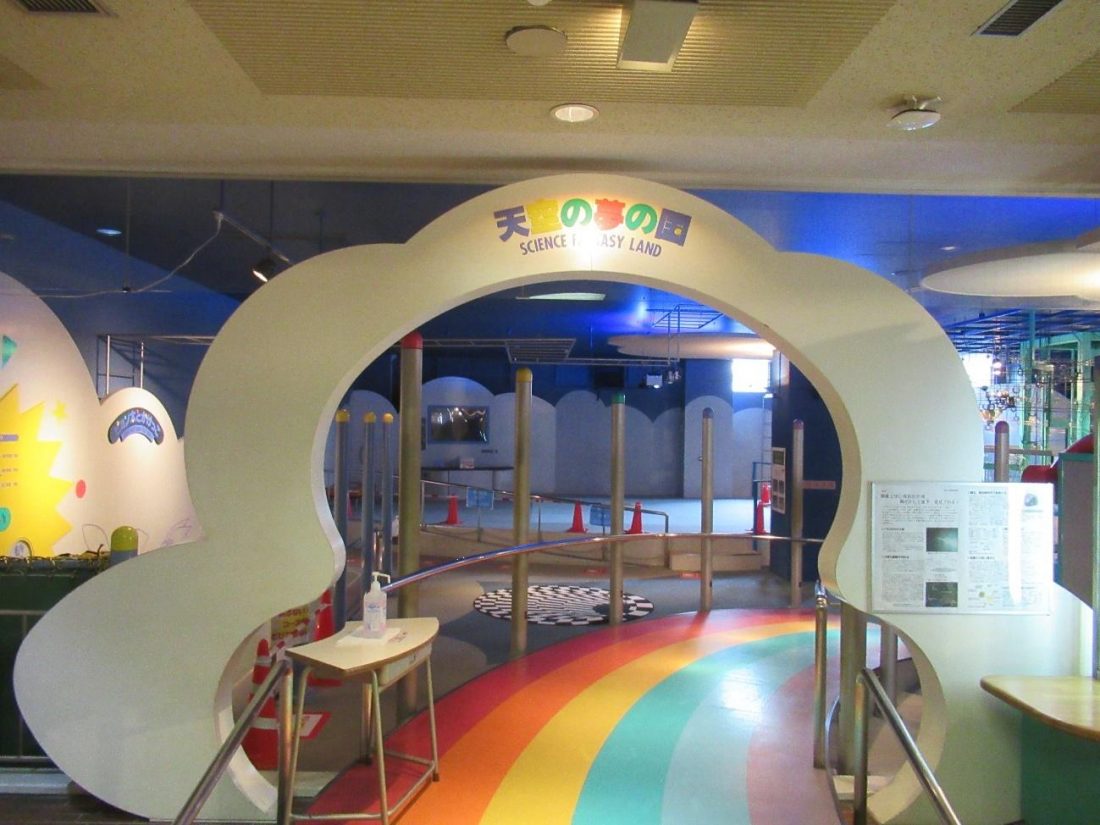
As the rainbow slope suggests, this part of the museum truly is a wonderland dedicated to the amusing laws of physics. Among their curiosities, they have a giant electromagnet that lets kids drag iron filings and paper clips every which way, a hollow tube filled with Styrofoam beads that jump at the same frequency as the sound running through the tube, and a basketball game that functions like an arcade crane game, with the claw powered by four hand crank-operated electric generators. The “visible sound” exhibit with the bead in a tube was one of the biggest hits with the kindergarteners, so don’t be surprised if you have to wait in line to play with these contraptions.
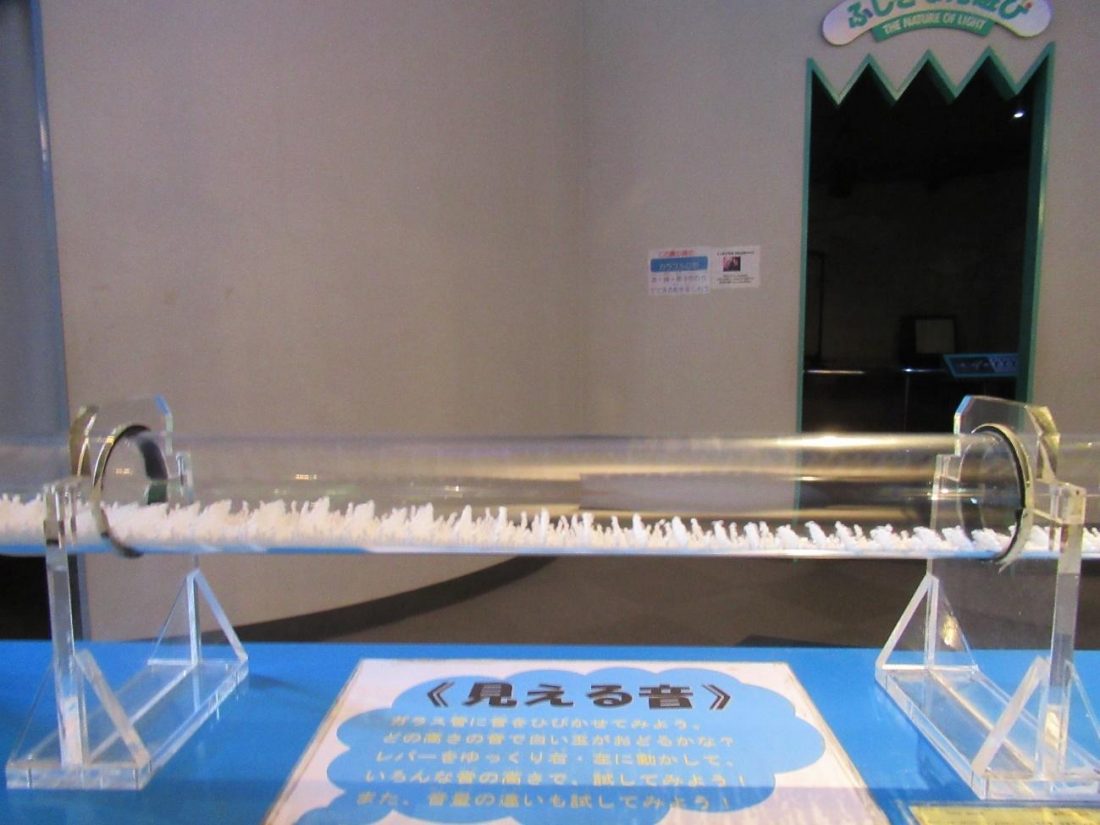
Of course, there are also parents with children who are not on a school trip fighting me and the school groups to have their fun, so I tried not to take too much time at any one apparatus. The most imposing device was probably the one in the center, where users turn cranks to raise balls onto a track and watch them fall along a winding path into a bowl, where they seem to run in circles forever before dropping through a hole in the middle. It’s not unlike the charity receptacles at some American shopping malls that perform the same mechanic on coins.
Moment of Joy: Unleashing the Inner Child
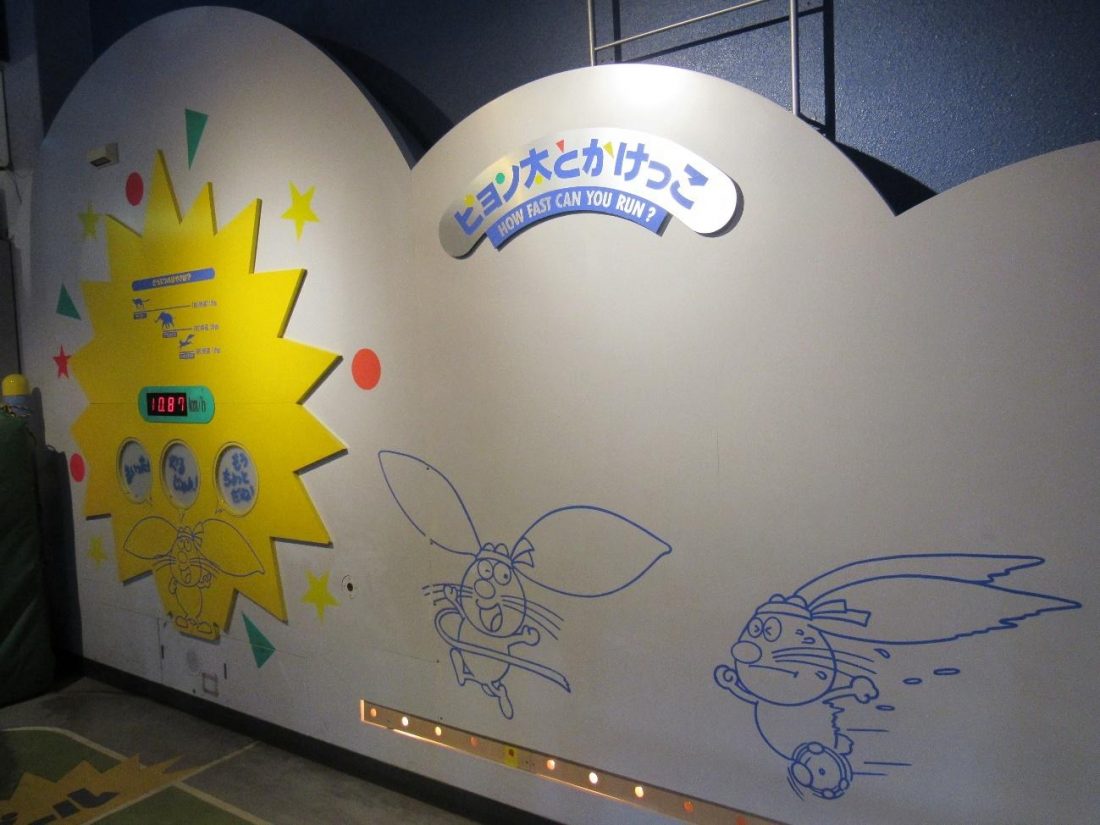
I have no children of my own, and before coming to the Children’s Museum, I actually contemplated borrowing somebody else’s child to enhance the experience. It turns out, however, that a child was never needed for me to have a blast here. Interactive games with scores had me playing again and again, unleashing my inner child via my gamer’s desire to one-up my personal record. Maybe one of these days I’ll be able to run as fast as a gray squirrel.
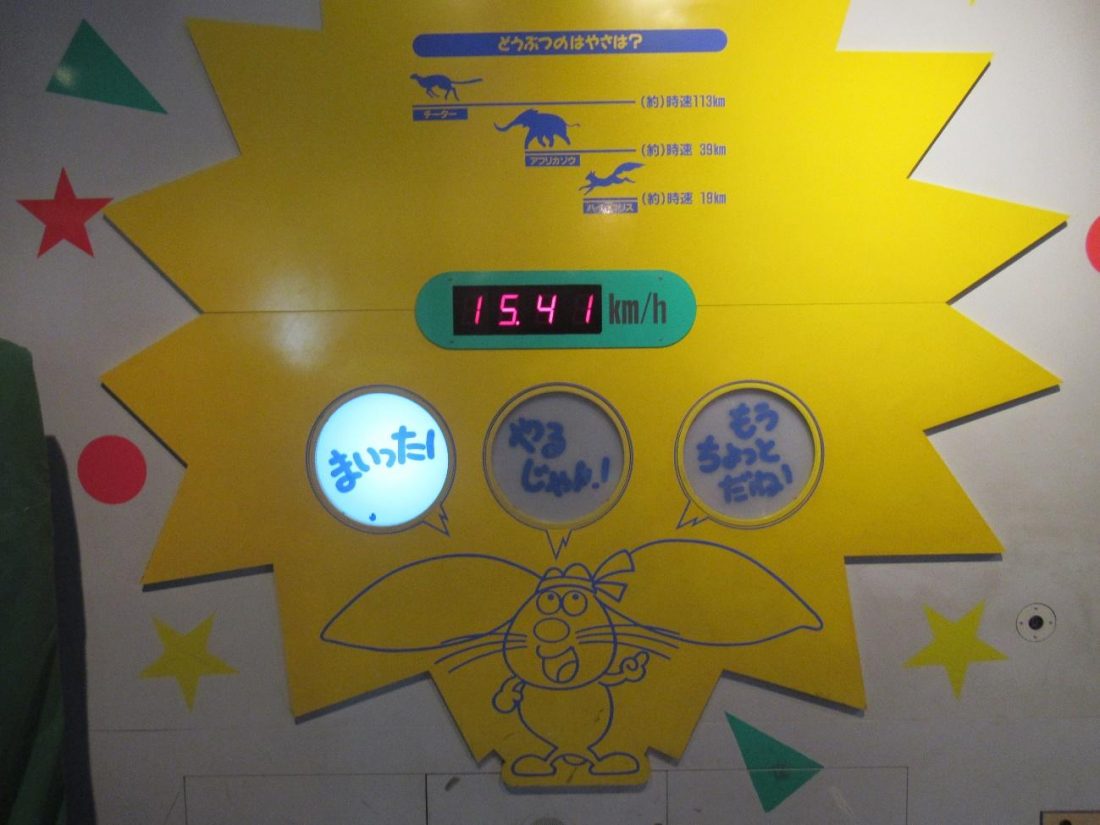
Second and Third Floors
There’s even more cool stuff to be found on the floors above. The second floor has its fair share of interesting gizmos just waiting to be tried. A lady working here showed me around, telling me how to operate the thermographic camera–letting me see people and objects the same way a machine does–and walked me through the green screen virtual reality games that can have the player acting as a soccer goalie, digging up dinosaur fossils, or cleaning up garbage in space.
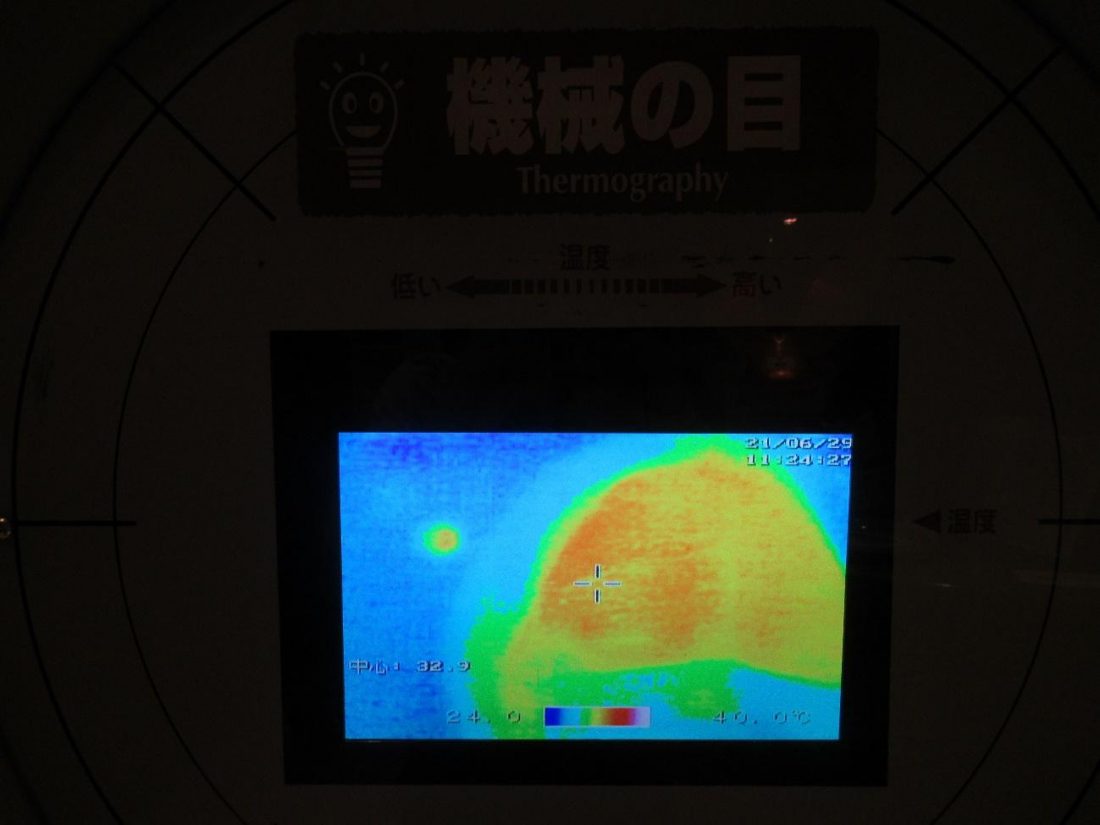
The highlight of this area would have to be the miniature town with trains and trams that run on the tracks when a dial is turned. Two vehicles I instantly noticed were the green Hokkaido Shinkansen as well as the iconic streetcar that runs throughout Hiroshima City. An employee in the maintenance room behind the exhibit consistently swaps out and fixes up the model trains, among other things, to make sure this little city always runs like clockwork.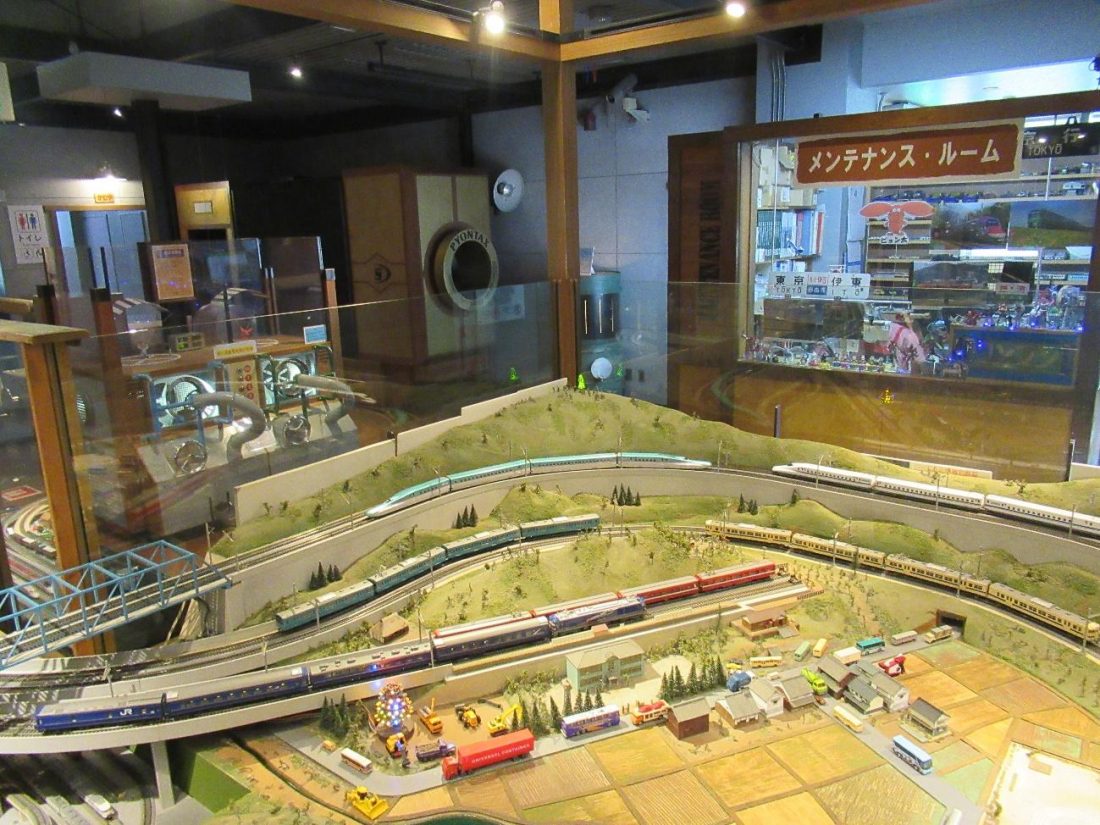
Right by the train tracks is another part of town with a separate race track for cars along with some robots that would appear colossal to the tiny citizens. The devices here are solar-powered, and the museum provides lamps to shine on everything to make the cars go and have the robots dance. They’ll continue so long as the spotlight is on them and stop when it’s not.
The third floor is home to the hands-on training and craft rooms, as well as a few more whimsical contraptions. Of note is a display about rocks and magma, fitted with a monitor and sensor pillar, and accompanied by a bucket of rocks. These are not ordinary rocks, however, as they all have a circular groove on the bottom that makes them compatible with the sensor. Place a rock on the sensor with the circular groove facing down, and the monitor will pull up facts on the rock in question. The machine will give the name of the rock, whether the rock is igneous, sedimentary, or metamorphic, as well as some interesting facts such as an origin story. This one here is granite, which is igneous (came out of a volcano and cooled off), and can be found in the stone foundation of Hiroshima Castle.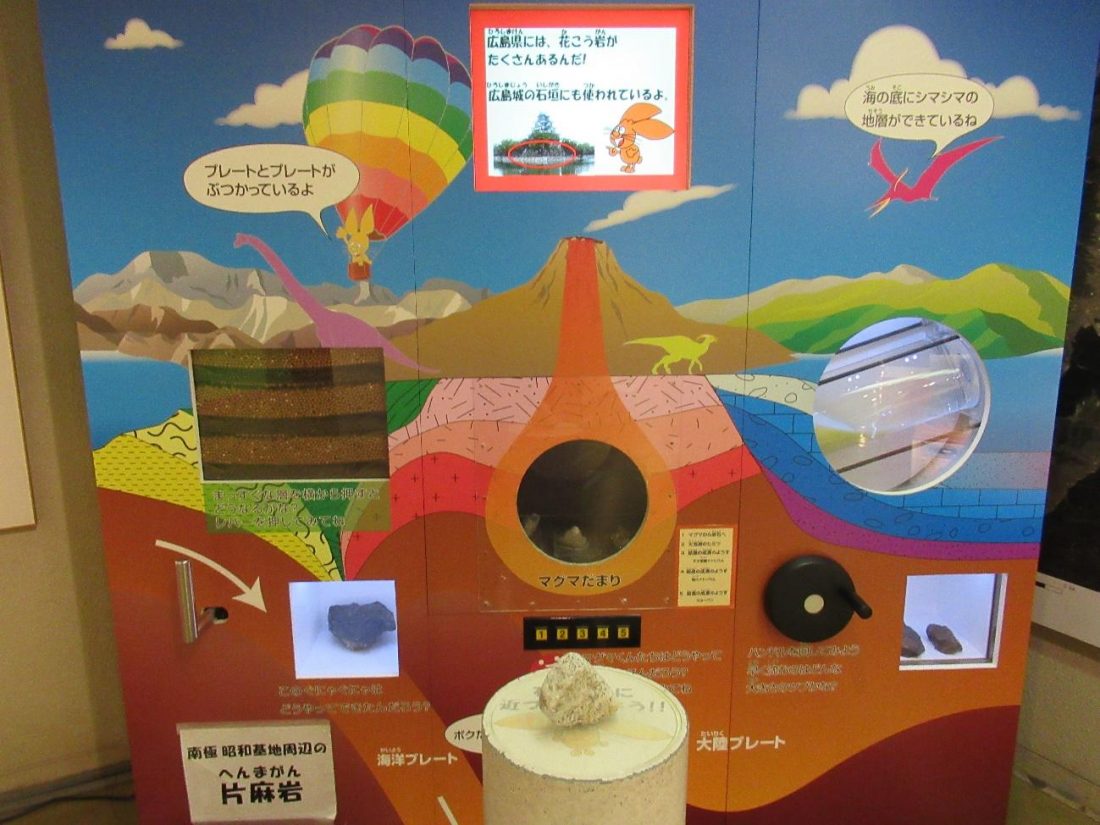
Other points of interest here include an exhibit showing a map of the northern and southern night skies in every season. Press any button and a constellation will light up, showing its place in the night sky. There’s also a corner introducing the electromagnetic spectrum and showing a video about the Sun. A heliostat outside the museum takes in sunlight available that day and the resulting rainbow is displayed here.
The Planetarium
I made my way up the stairs to the fourth floor, where the planetarium is located. There are four shows a day and they all cost money, but on certain days, adult guests and students may be able to enter for free or at a reduced price. Guests who bought tickets on the first floor wait here, and are asked to show up about ten minutes before the showing time. Outside the front door are posters advertising the shows currently playing, a map of the planetarium, and a monitor playing videos reminding visitors of basic etiquette like not eating or drinking during the show. Just as a word of caution, each show lasts about half an hour and there is no re-entry after leaving, so make sure your child’s bladder is empty before entering.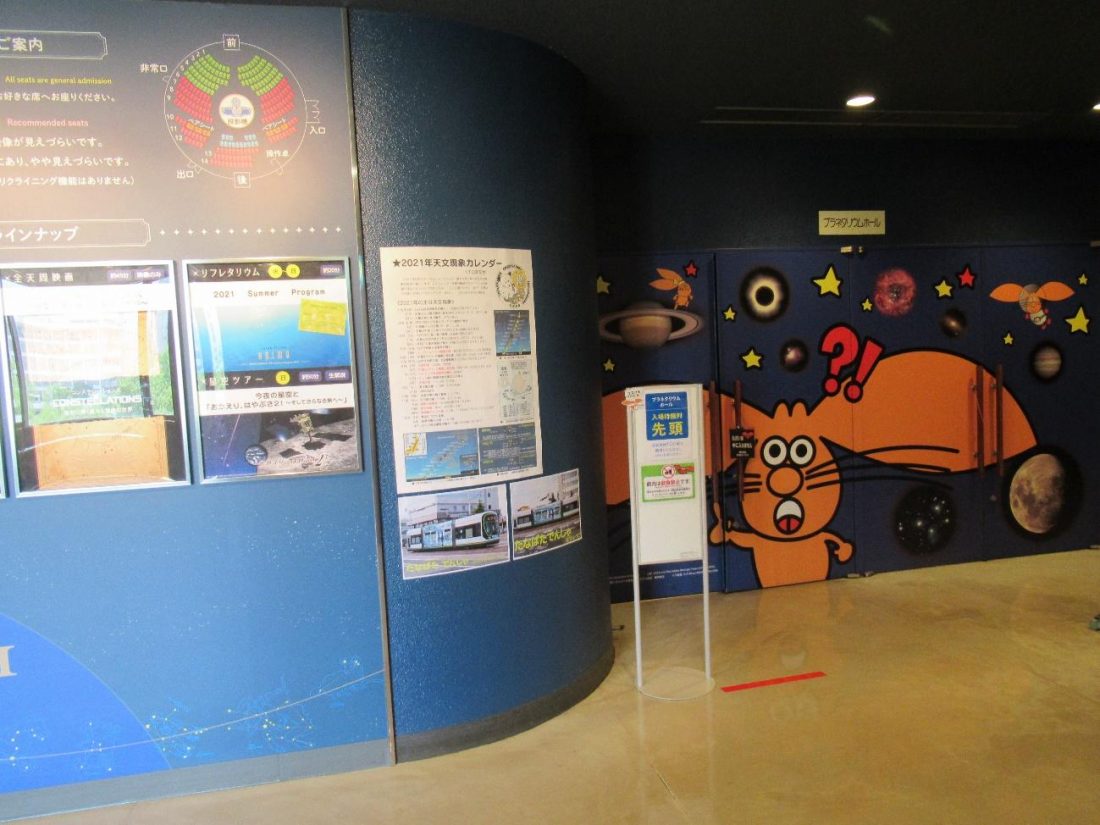
Once the doors open, an employee directs visitors to their seats inside the huge dome. Everyone sits around this central projector that superimposes the night sky onto the ceiling. What’s more, the projector can show what the night sky in Hiroshima looks like at any point in time: past, present, or future. Since it was late June and the Japanese Tanabata Festival was coming up soon, the feature presentation was the tale of Orihime and Hikoboshi (representations of the stars Vega and Altair, respectively), which explained why the Milky Way runs between them. After that, we were given a brief astronomy lecture where we were informed about the Summer Triangle, where the constellations Lyra, Aquila, and Cygnus convene. Lastly, we were taken on a truncated tour of the solar system up to Saturn, in which every celestial body had a silly face, drawing laughter from the kiddos. While little kids may be enthused by the performance, parents might be bored by the dull plots or cheap effects, so some have been known to use showtime as naptime (possibly much needed after playing on the three floors below).

Library and Garden
After I had finished seeing everything in the Children’s Museum, I exited and swung by the Children’s Library. Entire families can wind down, kill time, and escape the blazing summer heat here as there are books for everyone. I made my way towards the children’s book corner, where there were Japanese translations of kids’ books that I recognized in addition to works by Japanese authors. What really drew my attention, though, was the international cart filled with books in English, Chinese (both Simplified and Traditional), Korean, and Spanish! This would appeal to foreign visitors as well as anybody wishing to practice reading in the above languages. I was tempted to sign up for a library card right then and there just so I could check out a couple of those titles, but decided against it when I heard my tummy rumble.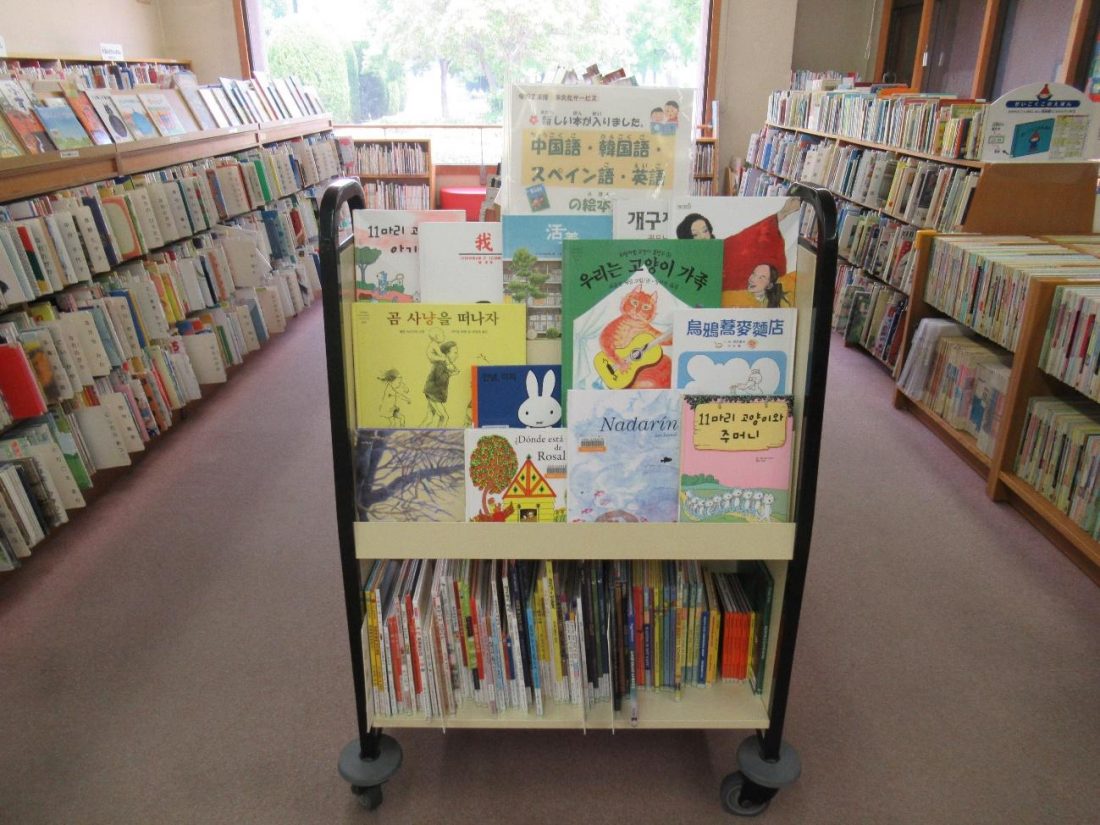
I had arrived in the morning and my visit to the Children’s Museum slipped well into lunchtime, so it was high time I hit the road and found a bite to eat. The nearest eateries can be found in the Sogo department store, the Shareo underground shopping mall, and the first floor of Orizuru Tower. Alternatively, if it please you, you could simply buy some snacks or a boxed lunch from a nearby store and eat those in the Hanover Garden right in front of the Children’s Museum. The Hanover Garden is a symbol of friendship between the cities of Hiroshima in Japan and Hanover in Germany, with the latter donating the greenery to the former to construct this space. Kindergarteners who are finished with their tour of the museum can be found picnicking here, and in the late afternoon, skateboarders show up to pop some tricks and have a good time. It is possible to play with your child in this garden, but I would advise against running because those fancy insignias are made with asphalt and can scrape children’s knees if they fall.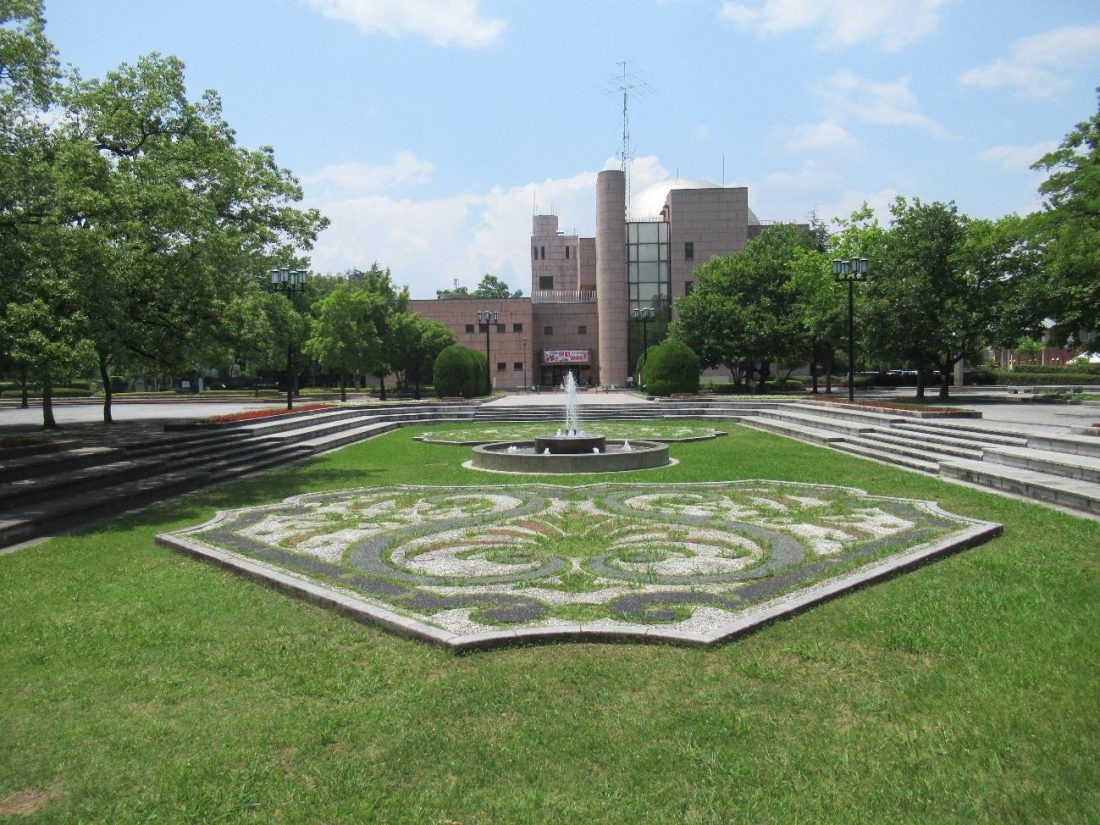
Although the Children’s Museum has “Children’s” in the name and targets a younger crowd, one doesn’t need to be a kid or bring one to fully enjoy what the museum has the offer (though having a child would be advantageous). As a lone, grown-up traveler, I was able to have a grand time here, and for adults, there’s actually the added bonus of nostalgia because a lot of the concepts demonstrated in the museum were things we learned in school. My only grievances would be that the museum should be bigger given that it’s the main museum of science in Hiroshima City, and they could afford to have more English translations throughout the facility. That aside though, just as I believe no one is too young to start learning science, nobody can outgrow learning more either. Whether you have kids or not, if you have a few hours to kill in downtown Hiroshima and are tired of shopping, give the Children’s Museum a chance. Your inner child may thank you.






